Step into any kitchen from the 1960s and you’d be transported to a world where convenience was king, color coordination was everything, and gadgets promised to revolutionize domestic life. These weren’t just kitchens – they were command centers of modern living, filled with space-age appliances in avocado green and harvest gold that seemed straight out of The Jetsons. Walking into one of these time capsules today feels like discovering buried treasure, where every cabinet and counter holds reminders of an era when TV dinners were the height of sophistication and matching everything was a point of pride.
1. The Harvest Gold or Avocado Green Refrigerator
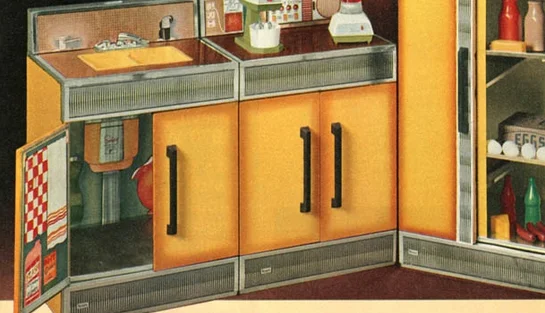
Those massive, squared-off refrigerators in signature ’60s colors were the undisputed centerpieces of the era’s kitchens. Harvest gold, avocado green, and coppertone brown were the holy trinity of appliance colors, and families would coordinate their entire kitchen around whichever shade they chose. The refrigerators were built like tanks, with thick insulation and heavy-duty latches that required real muscle to open, often accompanied by that distinctive whoosh of escaping cold air. Relics in Situ explores why these two colors in particular defined an era.
The freezer compartments were tiny by today’s standards, usually just big enough for a few ice cube trays and maybe a package of frozen peas. These appliances would run for decades without breaking down, becoming family heirlooms that outlasted marriages and mortgages. Today, finding one of these colorful giants in working condition is like discovering a vintage car – they’re coveted by collectors and anyone looking to recreate that authentic mid-century modern aesthetic.
2. The Rotary Wall Phone in the Kitchen Nook
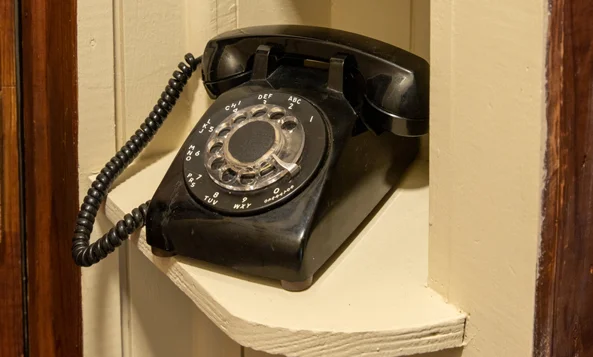
Every ’60s kitchen had a designated phone area, usually a built-in nook with a little shelf for the phone book and a pad of paper for messages. The rotary phone, often in a cheerful color to match the kitchen’s theme, was mounted on the wall with a cord long enough to reach the stove or sink. Dialing a number was a deliberate process that required patience as you waited for the dial to return to its starting position after each digit. House Digest untangles the mystery behind these architectural features persisting in so many homes.
The phone nook often included a small chair or stool, creating a command center where mom could coordinate carpools, chat with neighbors, and keep an eye on dinner all at the same time. That curly cord would stretch and tangle from constant use, and everyone in the family knew exactly how far you could walk while talking before the cord reached its limit. The busy signal was a real thing, and calling someone meant committing to the conversation since there was no such thing as caller ID or call waiting.
3. The Lazy Susan Spice Rack
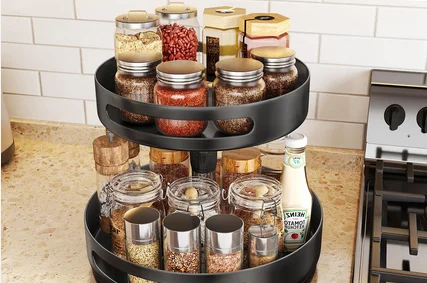
The spinning spice rack was the height of kitchen organization technology, allowing easy access to all your seasonings with just a gentle push. These round, rotating towers usually held small glass jars with metal lids, each labeled with names like “garlic powder,” “paprika,” and the mysterious “poultry seasoning” that seemed to be in every rack but rarely got used. The lazy Susan concept was applied to everything from spices to condiments, promising to revolutionize kitchen efficiency. HowStuffWorks explains not just this handy device but also its name.
Most families had a love-hate relationship with these spinning organizers because they looked so modern and space-age, but half the jars would always be stuck or wobbly. The spices would get dusty from sitting in the same spot for months, and inevitably someone would spin it too hard and send bottles flying across the counter. Despite their quirks, these rotating racks represented the ’60s obsession with making everything more convenient and futuristic, even if the execution didn’t always match the promise.
4. The Fondue Set with Color-Coded Forks
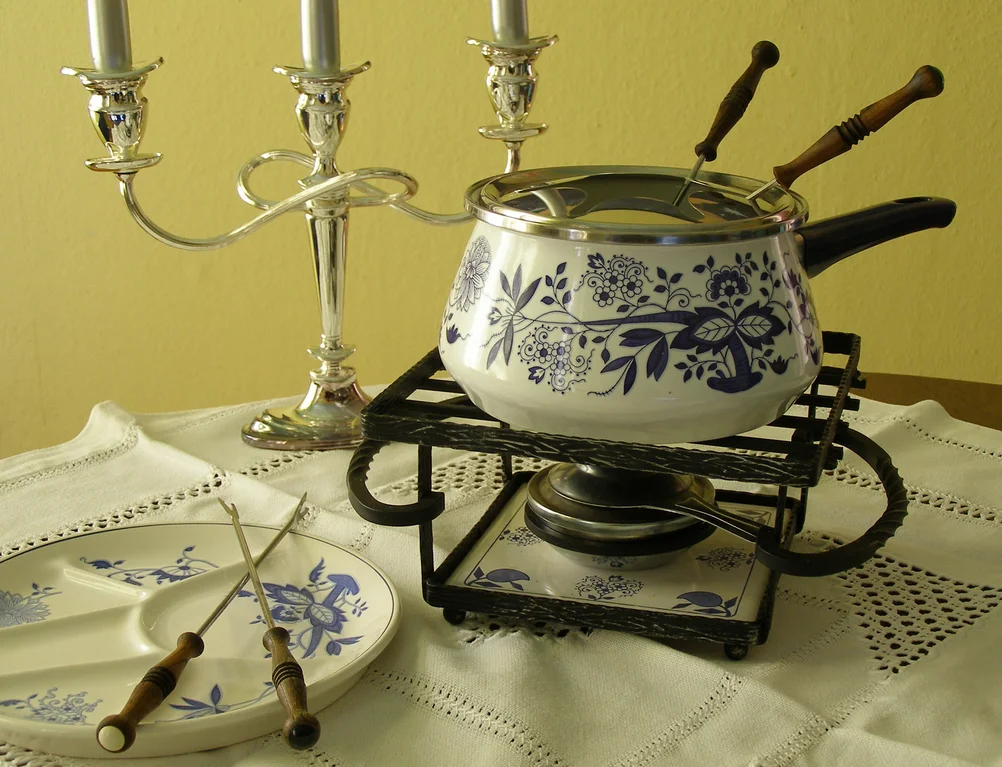
No ’60s kitchen was complete without at least one fondue set, and many households had multiple sets for different occasions – cheese fondue, chocolate fondue, and the fancy oil fondue for special dinners. The ceramic or metal pots came with their own heating elements and a set of long-handled forks, each with different colored tips so everyone could keep track of their own utensil. Fondue parties were the epitome of sophisticated entertaining, turning dinner into an interactive social event.
The fondue craze represented everything the ’60s loved about modern living – it was communal, slightly exotic, and required special equipment that made you feel like you were living in the future. Recipes for Swiss cheese fondue and chocolate strawberry fondue appeared in every women’s magazine, and hostesses took pride in their ability to keep the mixture at just the right consistency. Today, most fondue sets are gathering dust in attics or have been repurposed as decorative planters, but finding a complete set with all the original forks is like striking vintage gold.
5. The Electric Can Opener Mounted Under the Cabinet
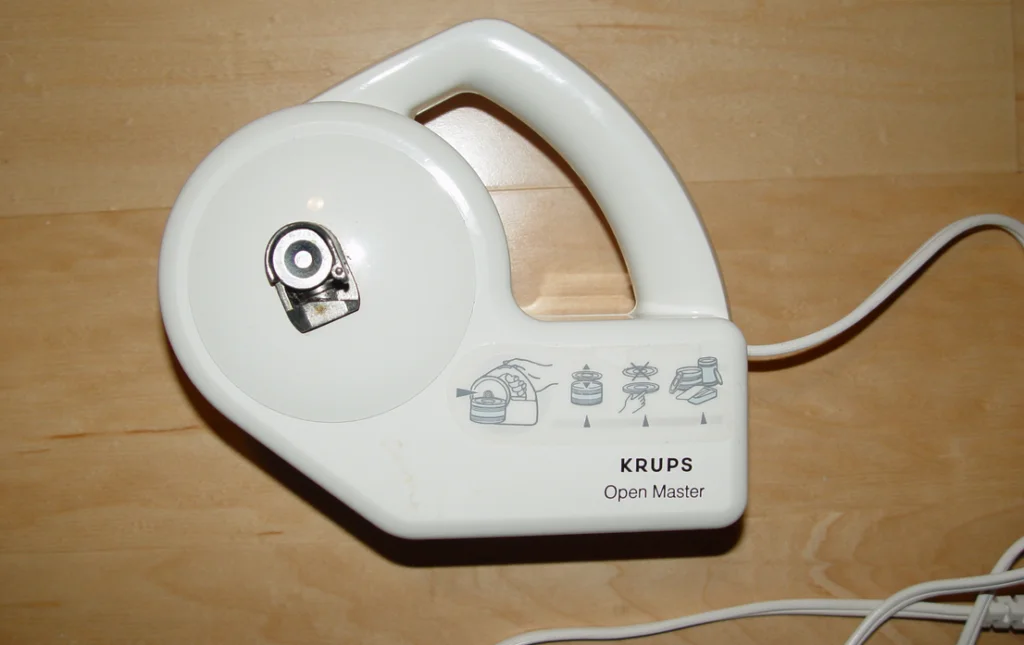
The under-cabinet electric can opener was a marvel of space-saving engineering that promised to free up valuable counter space while making meal prep effortless. These units were usually white or almond-colored plastic with a magnetic strip to hold the can while it was being opened. The whirring sound of the electric motor became the dinner bell of the ’60s, signaling that mom was starting to prepare the evening meal.
Many models included additional features like a knife sharpener, ice crusher, or even a small radio, turning them into multi-purpose kitchen command centers. The magnetic can-holding feature seemed revolutionary at the time, though it only worked reliably about half the time, leading to many cans crashing to the floor mid-opening. These gadgets represented the era’s faith in electrical solutions to everyday problems, even when a simple manual can opener might have been more reliable.
6. The Jell-O Mold Collection

Every ’60s kitchen had an impressive collection of Jell-O molds in various shapes and sizes, from simple ring molds to elaborate fish-shaped creations and decorative Bundt-style designs. These aluminum molds were displayed proudly in cabinets, ready to create the molded salads and desserts that were essential to proper entertaining. Lime Jell-O with cottage cheese and pineapple wasn’t just a recipe – it was a lifestyle statement that showed you were keeping up with modern culinary trends.
The art of unmolding a perfect Jell-O creation was passed down from mother to daughter, involving careful timing, warm water baths, and prayers to the gelatin gods. A successful molded salad could be the centerpiece of a bridge party or church potluck, while a collapsed mold was a social disaster that required quick thinking and creative plating. These molds represented the ’60s fascination with foods that looked as space-age as they tasted, turning simple ingredients into architectural marvels.
7. The Automatic Percolator Coffee Pot
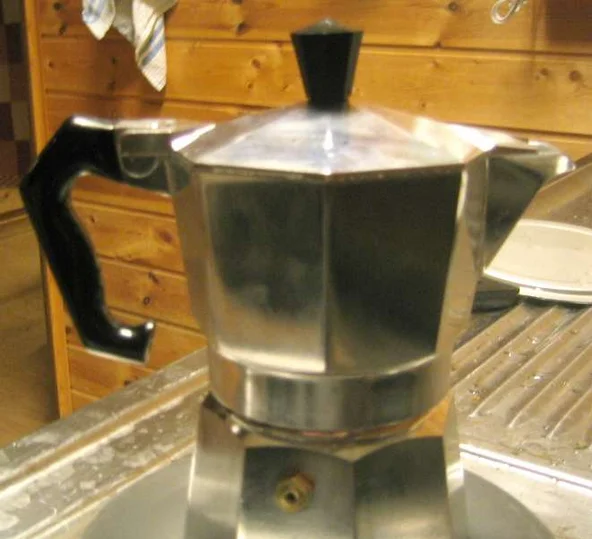
The electric percolator was the morning ritual centerpiece, with its distinctive bubble-topped design and that rhythmic perking sound that meant coffee was almost ready. These chrome or aluminum pots would gurgle and bubble on the counter, creating a coffee aroma that filled the entire house. The clear glass knob on top let you watch the coffee brewing, turning the morning caffeine routine into a small piece of kitchen theater.
Making coffee was a precise art form that required the right grind, the correct water-to-coffee ratio, and perfect timing to avoid over-percolation that would make the brew bitter. The percolator represented reliability and tradition, producing the same strong, hot coffee every morning for decades without fail. These pots were wedding gifts that lasted entire marriages, becoming as much a part of the family routine as reading the morning newspaper or listening to the radio weather report.
8. The TV Dinner Trays and Warming Racks
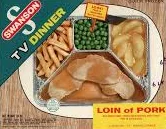
TV dinner trays weren’t just for eating – they were symbols of modern convenience and the changing American lifestyle. These lightweight aluminum trays with their divided compartments represented freedom from formal dining rooms and the ability to eat while watching your favorite television programs. Most families had a set of matching trays that could be stacked neatly in cabinets when not in use.
The warming racks that held these trays were ingenious devices that kept your meal at the perfect temperature while you settled in for an evening of entertainment. Swanson TV dinners were the gold standard, but every brand had their own version of these complete meals that promised restaurant-quality food with minimal preparation. The ritual of choosing your TV dinner from the freezer and timing it perfectly with your favorite show became a cherished part of the evening routine that defined casual dining for an entire generation.
9. The Tupperware Collection Display
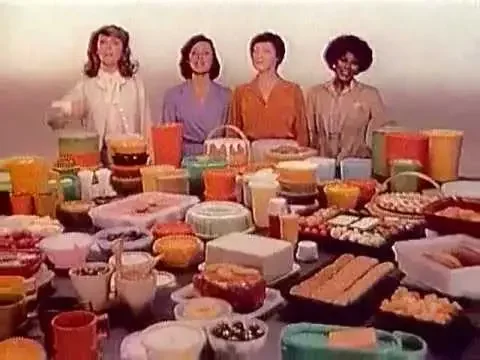
Tupperware wasn’t just food storage – it was a status symbol that deserved prominent display in kitchen cabinets with glass doors. The colorful plastic containers with their famous “burping” seal represented the height of modern food preservation technology. Every kitchen had a dedicated Tupperware cabinet where the containers were nested together like colorful Russian dolls, with lids stored separately in perfect organizational harmony.
The Tupperware party was a social institution that brought neighbors together to learn about the latest innovations in plastic food storage while enjoying refreshments and socializing. Hostesses took pride in their Tupperware collections, and the right combination of bowls, containers, and specialty items could handle everything from leftover casseroles to packed lunches. The products were guaranteed for life, and many families still have pieces from their original ’60s collection, proving that some plastic really was built to last forever.
10. The Kitschy Salt and Pepper Shaker Collection
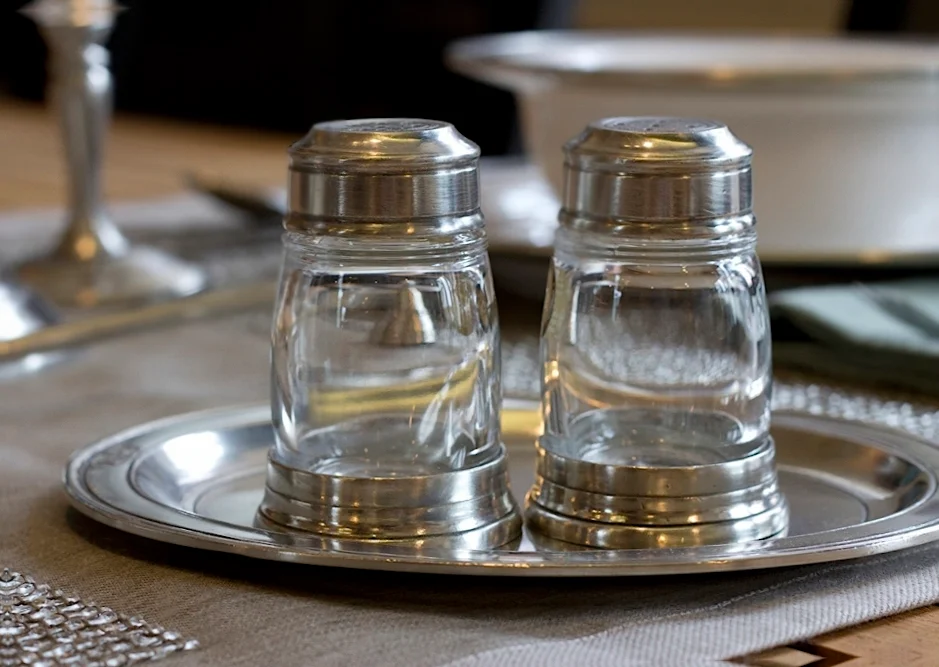
Every ’60s kitchen featured an extensive collection of novelty salt and pepper shakers displayed on open shelving or in a special shadow box. These weren’t just functional items – they were conversation starters that reflected the homeowner’s personality and sense of humor. Popular themes included anthropomorphic vegetables, miniature animals, tourist souvenirs, and holiday-themed sets that would be rotated seasonally.
The shakers often came in sets that told a story or completed a scene when placed together, like a farmer and his pig, or a chef and his cooking pot. Collecting these miniature works of art became a hobby that could last a lifetime, with special pieces acquired during vacations or given as gifts by thoughtful friends. Each set had its own personality and place in the kitchen hierarchy, with the everyday shakers used for cooking and the special ones reserved for when company came to dinner.
11. The Recipe Box with Handwritten Index Cards
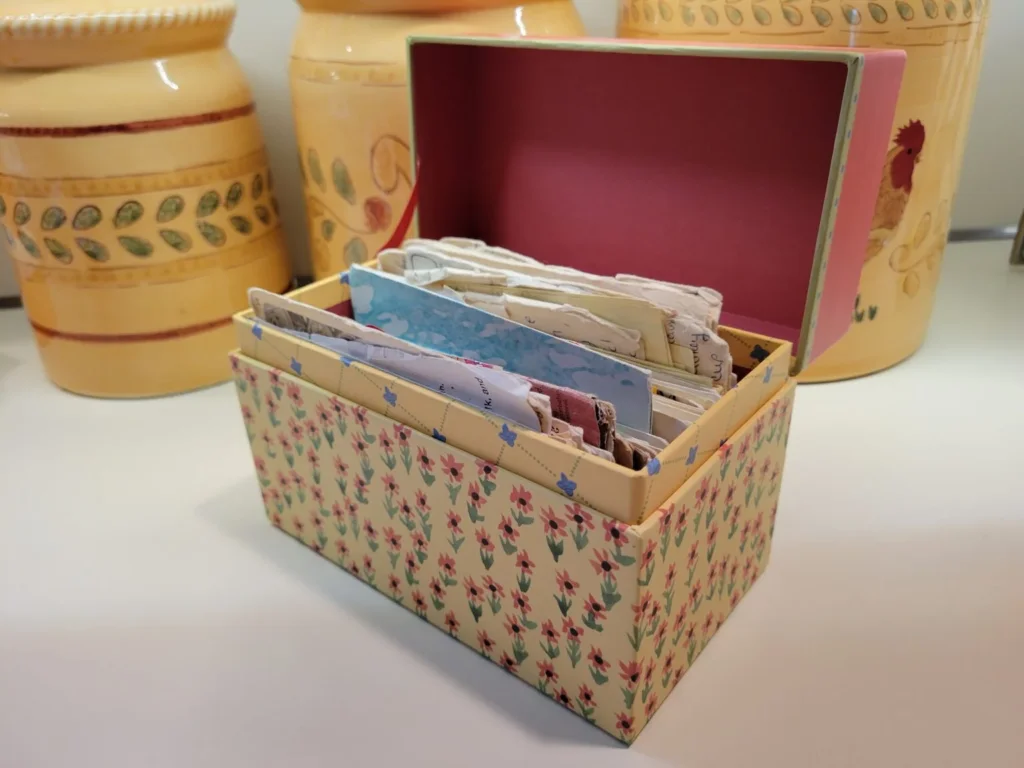
The wooden recipe box was the Pinterest of the ’60s, containing carefully handwritten index cards with family favorites, magazine clippings, and recipes copied from friends at church or bridge club. These boxes were usually made of wood with decorative details and dividers that organized recipes by category – appetizers, main dishes, desserts, and the catch-all “miscellaneous” section. The handwriting on the cards told the story of family cooking traditions passed down through generations.
Many cards were stained with ingredients from years of use, and the most popular recipes could be identified by their worn edges and faded writing. The recipe box was a treasure trove of family history, containing not just ingredients and instructions but notes about which occasions called for which dishes. Trading recipes was a social currency, and copying a friend’s secret family recipe onto a fresh index card was an act of trust and friendship that strengthened community bonds.
12. The Slide-Out Cutting Board Built Into the Counter
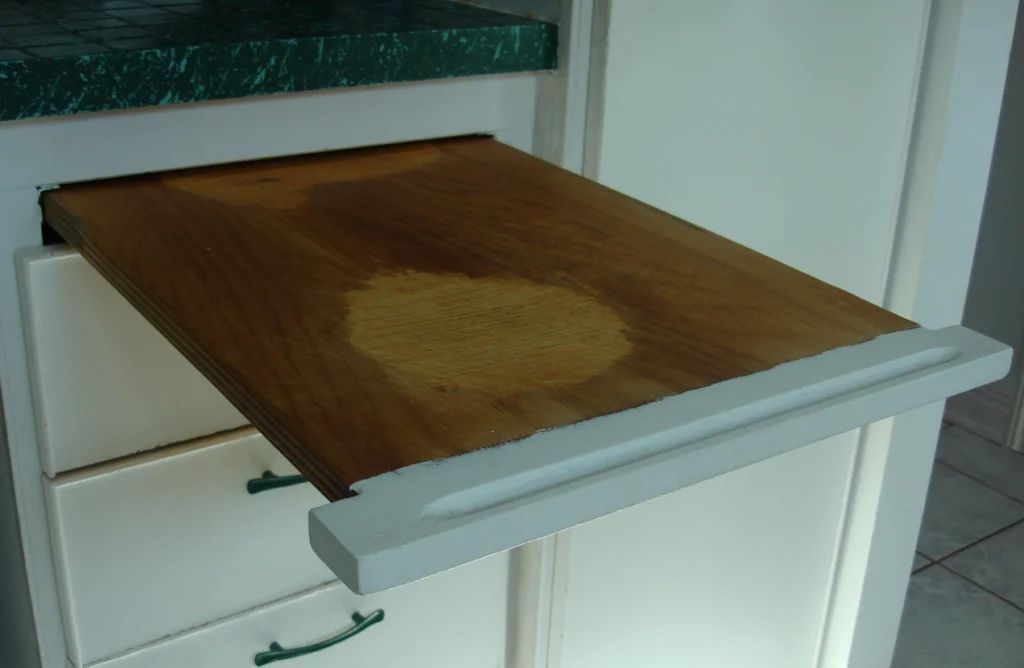
The pull-out cutting board seemed like the ultimate in kitchen convenience, sliding smoothly out from its hiding place under the counter to provide instant prep space exactly where you needed it. These boards were usually made of maple or other hardwood and fit perfectly into their custom slots, representing the era’s love of built-in solutions and space-saving design. When not in use, they disappeared completely, maintaining the clean lines that were so important to ’60s kitchen aesthetics.
The cutting board would see daily use for everything from slicing vegetables to rolling out pie dough, developing a patina of knife marks and stains that told the story of countless family meals. These boards required regular maintenance with mineral oil and careful cleaning to prevent warping, but when properly cared for, they could last for decades. The convenience of having a cutting surface that appeared exactly when needed and disappeared when finished represented the kind of thoughtful design that made ’60s kitchens feel truly modern.
13. The Breakfast Nook with Built-In Banquette Seating
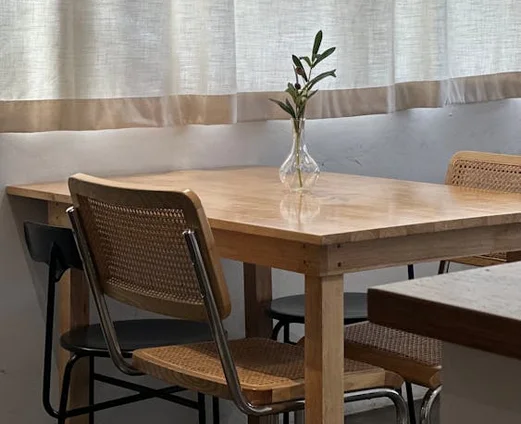
The breakfast nook was the heart of casual family dining, featuring built-in bench seating upholstered in cheerful vinyl that could be wiped clean after every meal. These cozy dining areas were usually tucked into a corner or bay window area, with a custom table that fit perfectly into the space. The seating was designed for maximum efficiency, allowing families to squeeze more people into a smaller area while creating an intimate atmosphere for daily meals.
The vinyl upholstery came in colors that matched the kitchen’s overall theme, often in bold patterns or solid colors that coordinated with the appliances and window treatments. These nooks became the center of family life, where homework was done, bills were paid, and important conversations happened over bowls of cereal or cups of coffee. The built-in storage under the benches provided extra space for table linens, games, or the overflow from overstuffed kitchen cabinets, making every square inch of the kitchen work harder.
Walking through a preserved ’60s kitchen today is like stepping into a time machine that reveals how our grandparents and parents lived, cooked, and entertained. These artifacts tell the story of an era that embraced convenience, celebrated color, and believed that the right gadget could solve any household challenge. While many of these items have been replaced by more efficient modern alternatives, they remind us of a time when families gathered around the breakfast nook every morning and took pride in serving dinner from matching serving dishes that had been wedding gifts decades earlier.


